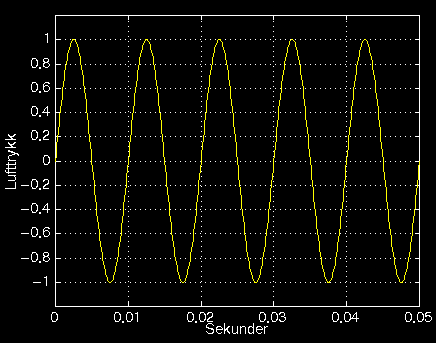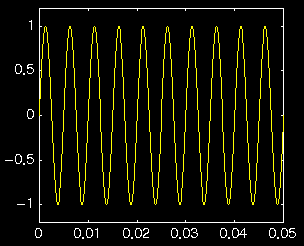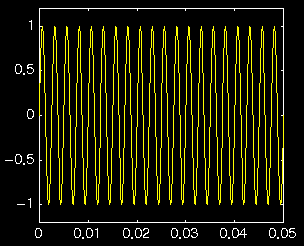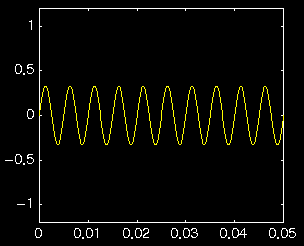Sound WavesSounds are changes in air pressure that are transported through the air. If these variations are recorded by a microphone and the sound vibrations are displayed using a computer, we can study how the sound is constructed. You may try this yourself with the sound editing program.

In the illustration above we see what is called a sine tone, which is perhaps the simplest sound one can imagine. Click here to hear. Time is plotted on the x-axis and air pressure is represented on the y-axis. The curve repeats itself at each hundredth second interval (0.01 seconds), and we say that the frequency is 100 Hertz (Hz).
What happens if one makes the curve repeat itself 200 times per second (200 Hz), or 400 times per second? Click here to find out.


A higher frequency means a higher tone.
Another thing we can do with this tone is to change the fluctuation, or the "height" of its curve.

Click to hear!

Click to hear!
The larger the fluctuation is, the stronger the amplitude.
|